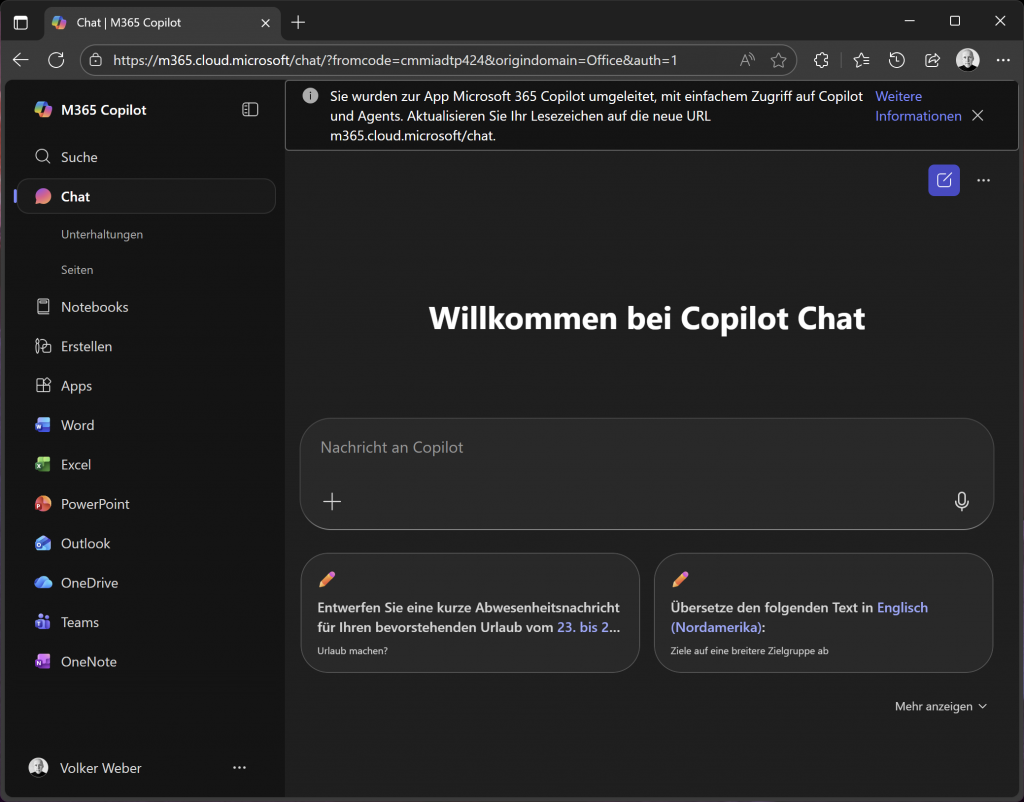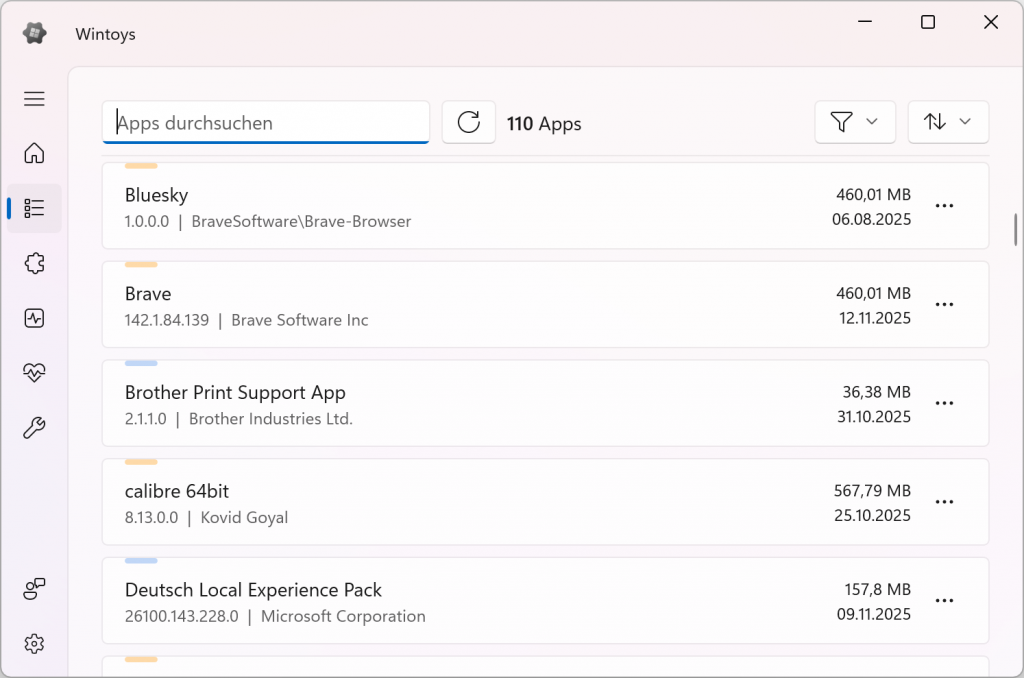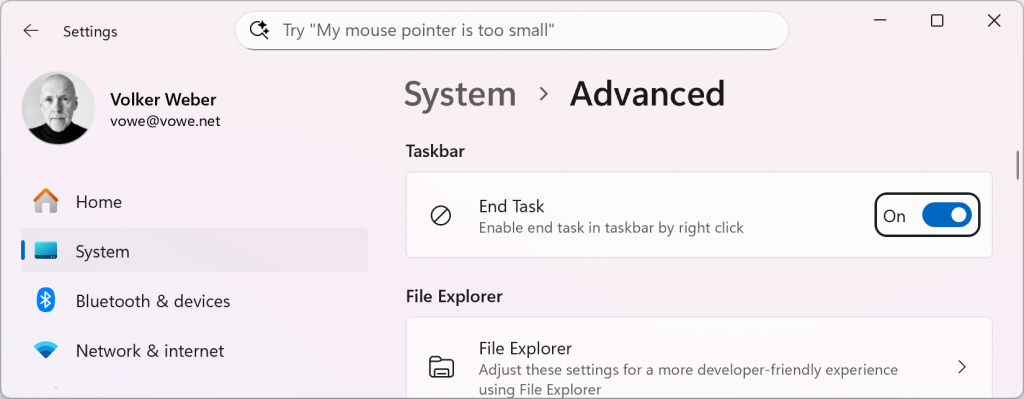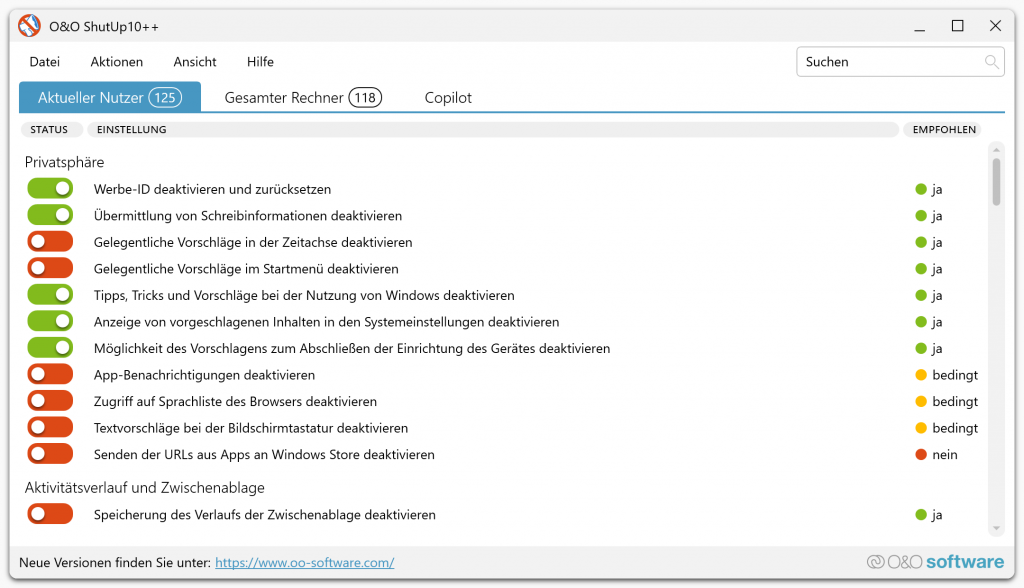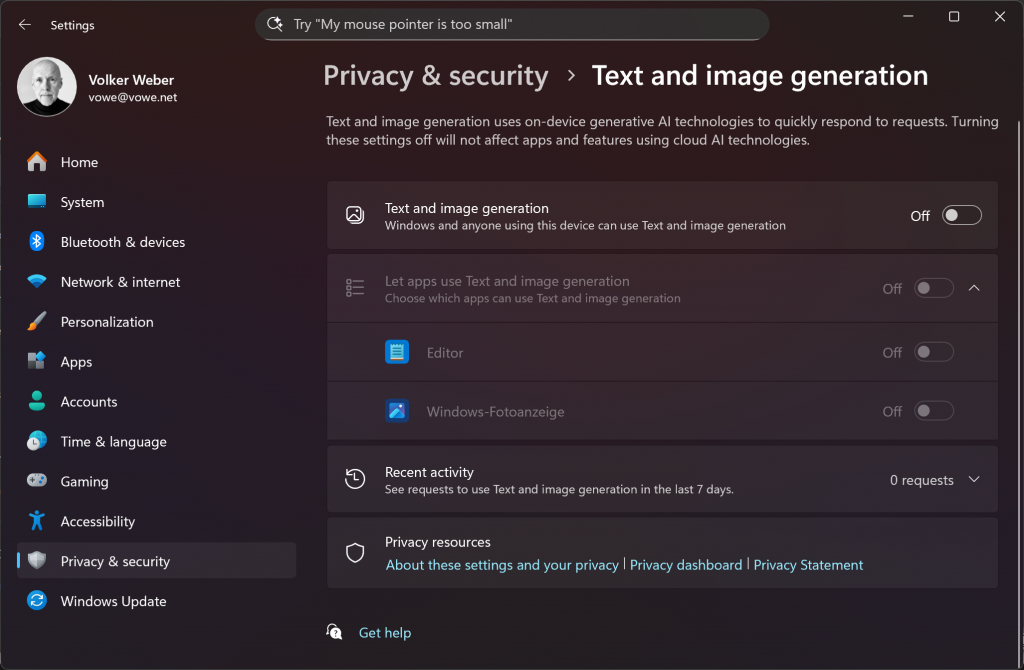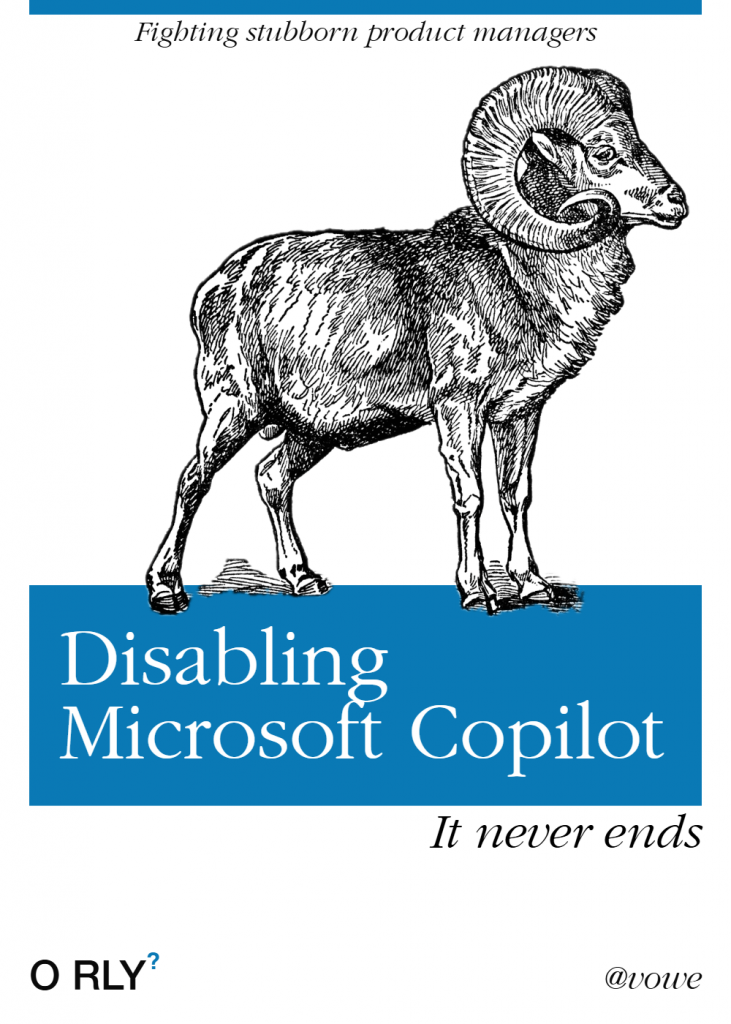
Ich bin immer noch dabei, die News der letzten Wochen zu verdauen. Das geht wahrscheinlich allen so bei dem Blödsinn, der täglich vom großen Bruder über den Teich schwappt.
Ganz besonders heftig habe ich den Kopf letzte Woche bei den News der Ignite-Konferenz geschüttelt. So wie früher bei IBM auf einmal alles Watson hieß, stopft Microsoft nun mit atemberaubendem Tempo überall Clippy, ähm Copilot rein. Ich bin derart damit beschäftigt, das aus dem Weg zu schaffen, dass ich mich schließlich entschieden habe, mal einen Bucheinband zu entwerfen, der sich größter Beliebtheit erfreut.
Ich weiß, dass der eine oder andere ganz begeistert ist, was er mithilfe von Copilot so alles basteln kann, aber das nennt man rückwärtsgewandt “technical debt”. Einfache Regel: Wenn Copilot besser ist als du, dann bist du nicht besonders gut. Wahrscheinlich machst du etwas, wovon du besser die Finger lassen solltest. Wir erinnern uns an Access- oder dBase-Anwendungen, gerne heute auch als querreferenzierte Excel-Dateien, die sich den Hals brechen, wenn sich die Pfade ändern.
Wie komme ich darauf? Ich lasse mir von Copilot Dinge erklären, von denen ich richtig Ahnung habe. Und lache erst und weine dann. Gestern hatte ich auf einem der PC Streit mit dem Windows Update. Der wollte auf ein Windows 11 25H2 gerne noch mal Windows 25H2 installieren, scheiterte dann und rollte wieder zurück. Um es dann erneut zu probieren.
Copilot ist da so hilfreich wie die vielen selbsternannten Experten im Microsoft-Forum. Das ist seine Empfehlung. Die findet man 1:1 auch in den Foren. Kein Wunder, Copilot weiß ja nichts, sondern schwätzt einfach nur schön. Sicheres Auftreten bei gleichzeitiger Ahnungslosigkeit.
Copilot kann das auch nicht machen, sondern nur erzählen. Du bist dann ein paar Stunden beschäftigt und kommst keinen Schritt weiter. Am Ende zieht man den Stecker und spielt einfach ein neues Windows auf:

Also nicht drüber, das hatten wir ja schon vorher nach der Anweisung von Copilot probiert. Ganz einfach nach alter Väter Sitte, formatieren, alles weg, neu draufspielen, Backup wiederherstellen. Backup hast du, ja?
Dieser Schwätzer soll also demnächst als Agentic AI (meep meep buzzword alert) Windows steuern und deine Geschäftsprozesse übernehmen. Ich befürchte Microsoft schmeißt im AI-Eifer alles kaputt, was sie in Jahrzehnten aufgebaut haben.
Und nein, dieses Buch da oben wird es nicht geben, denn das müsste viermal im Monat aktualisiert werden, um wieder den nächsten Copiloten zu erlegen.
Wie besoffen ist Microsoft? So besoffen, dass sie sogar Office.com hinter Copilot verstecken:
